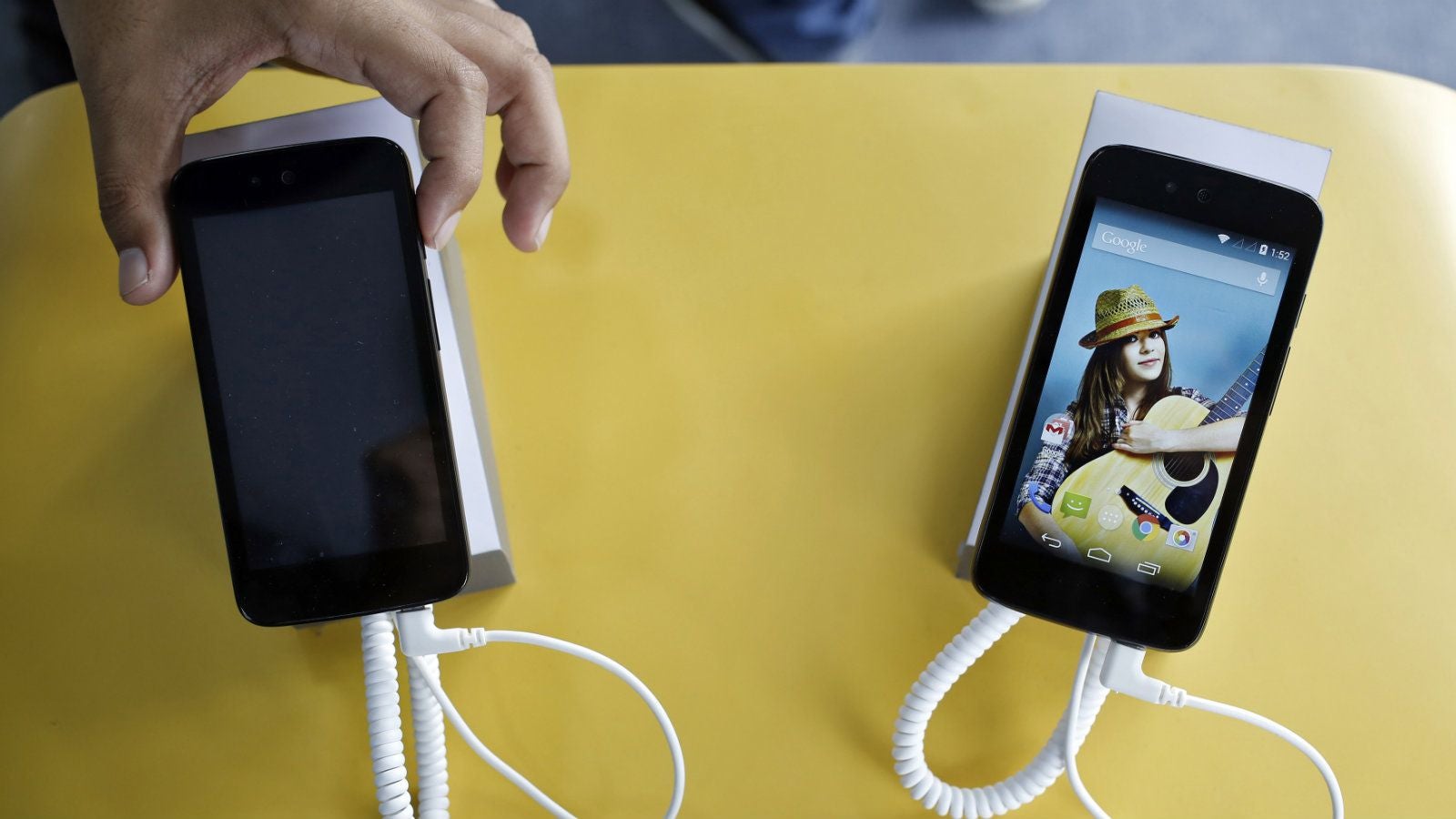Free internet is becoming a way to get people to buy phones
In the West, where mobile operators sell phones alongside service contracts, the proposition to customers goes something like this: Buy your talktime, texts, and data from us, and in return we will give you a free—or heavily subsidized—smartphone.


In the West, where mobile operators sell phones alongside service contracts, the proposition to customers goes something like this: Buy your talktime, texts, and data from us, and in return we will give you a free—or heavily subsidized—smartphone.
In the rest of the world, where mobile services are mostly prepaid, customers generally pay for their phones and cellular service separately. That’s beginning to change, but with the bundling proposition flipped. Increasingly, mobile operators and device makers are teaming up to offer free internet access to customers who buy their phones.
The latest to join the free-internet bandwagon is Datawind, the company behind the much-hyped $20 tablet. The Canadian-Indian start-up plans to sell smartphones in India for Rs. 2,000 ($32)—with free internet for life. Meanwhile, Google this week announced the first set of its Android One devices, all of which come with 200 MB of data free—as long as you use that data to download apps on Google Play.
That’s the tricky bit with “free” internet. It very rarely turns out to live up to that billing. Take the Steppa, a phone sold by South African mobile operator MTN. It sells for under $50 and comes “bundled with an MTN PayAsYouGo starter pack including free social and email smartphone services.” That is a very limited piece of the internet.
MTN’s plan is about getting customers to use social—and, later, more data that they pay for. Google’s Android One phones in India, which retail for about $105, are about pushing customers to use Google services. The details of Datawind’s plan aren’t clear (Datawind said the price and free internet access duration will be announced when the product is launched in a few weeks), but since it is operators who will set the terms, expect similar restrictions. And the company may also be thinking about including advertising, if its business plan for its earlier tablets is any indication.
All these companies will tell you that their efforts are aimed at reducing costs and putting the internet in the hands of billions more people. That is certainly a noble goal. But the devices that are shoved into people’s hands have so far offered them only a cloistered version of the web.